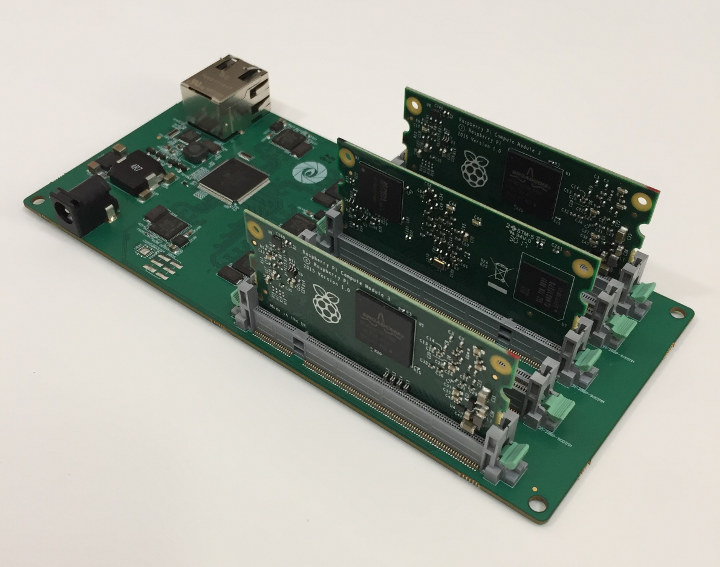Mininodes is known for their hosting services based on Arm development boards such as Cubieboard2, 96Boards Hikey, or Raspberry Pi 3, but the company unveiled their own hardware platform at Arm TechCon 2018 with miniNodes Raspberry Pi CoM (Computer-on-Module) carrier board that takes up to five Raspberry Pi Compute Modules 3.
Beside the five sockets for CM3 / CM3L modules, the carrier board is also equipped with a gigabit Ethernet switch and RJ45 connector, as well as a DC jack to power the whole setup.

The white round logo on the board most certainly means mininodes designed the board with Gumstix Geppeto web platform that allows you to fairly easily design your own custom boards in a web browser without having to draw schematics, and then handle the PCB layout.
The company explains the Raspberry Pi 3 CoM Carrier Board can be used to provide edge compute capacity in remote environments, industrial settings, or space constrained locations. Alternatively, you could use it as a learning / teaching platform for subjects such as compute clustering, Docker Swarm, Kubernetes, or simply make use of the hardware as a general purpose development platform.
The boards are almost ready, and the company is now taking pre-orders for $259 plus shipping with delivery scheduled for December or January. That’s only for the carrier board, and you’d still need to purchase Compute Module 3/3L separately.
Thanks to theguyuk for the tip.

Jean-Luc started CNX Software in 2010 as a part-time endeavor, before quitting his job as a software engineering manager, and starting to write daily news, and reviews full time later in 2011.
Support CNX Software! Donate via cryptocurrencies, become a Patron on Patreon, or purchase goods on Amazon or Aliexpress




